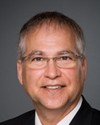In our consultations, which were quite extensive all across southern Ontario, we had the opportunity to meet a bunch of people who had the same idea. We would go to a community and they would tell us that they didn't want to become a one-industry town. They wanted to be the best in the world in water technology. I would go to another community two hundred kilometres away, and I'd hear the same thing.
Quite quickly, I talked to the partners and said that we couldn't fund five people to be the best in the world; it didn't not make sense. I suggested that they get together to come up with a better idea, and we worked with the organization for almost a year. It ended up, as I said, including seven or eight universities, seven or eight municipalities all along the Grand River corridor, running from the northern part of southern Ontario all the way down to the Great Lakes. This organization with, I believe, 68 or 70 private sector companies is going to develop everything from software to manage water, to sensors, flood control, purification, and cultivation. You name it, they're going to design it and invent it, test it here, and then produce it here, and sell it to the world.
This is the largest water consortium. I don't believe there's another project this big or this focused on creating critical mass anywhere in the world.

